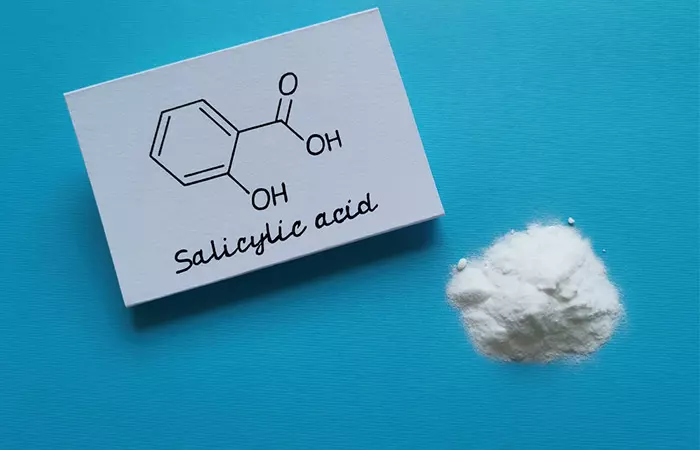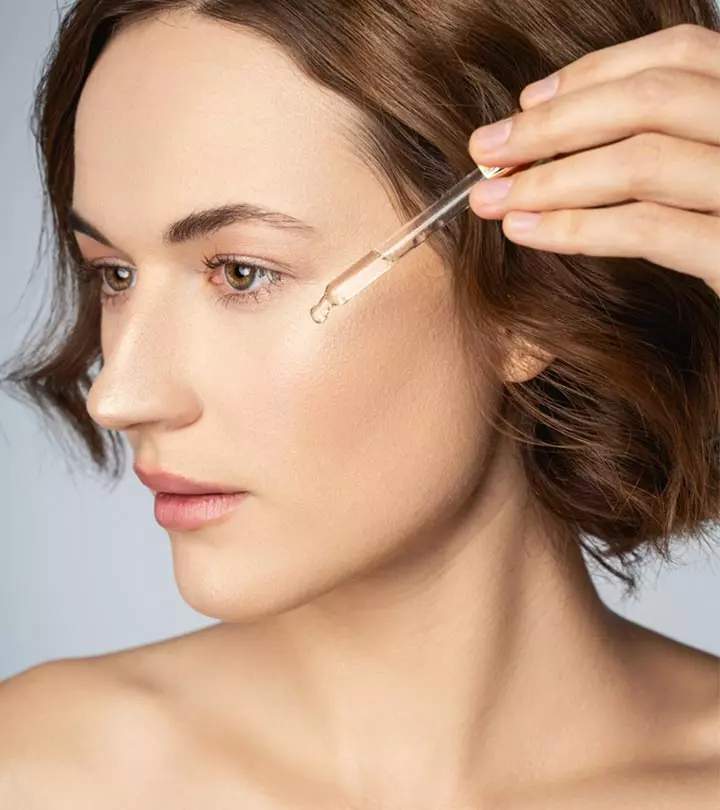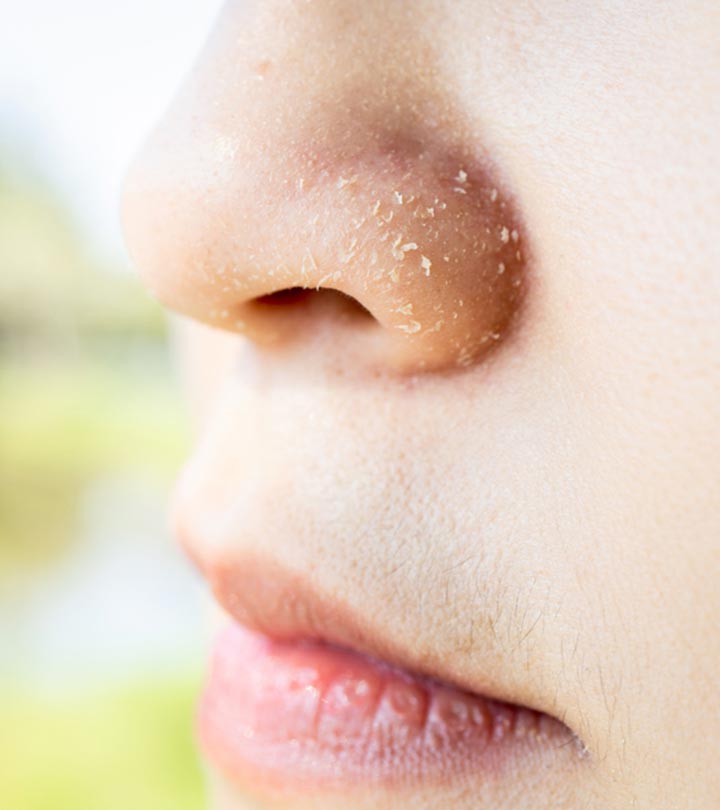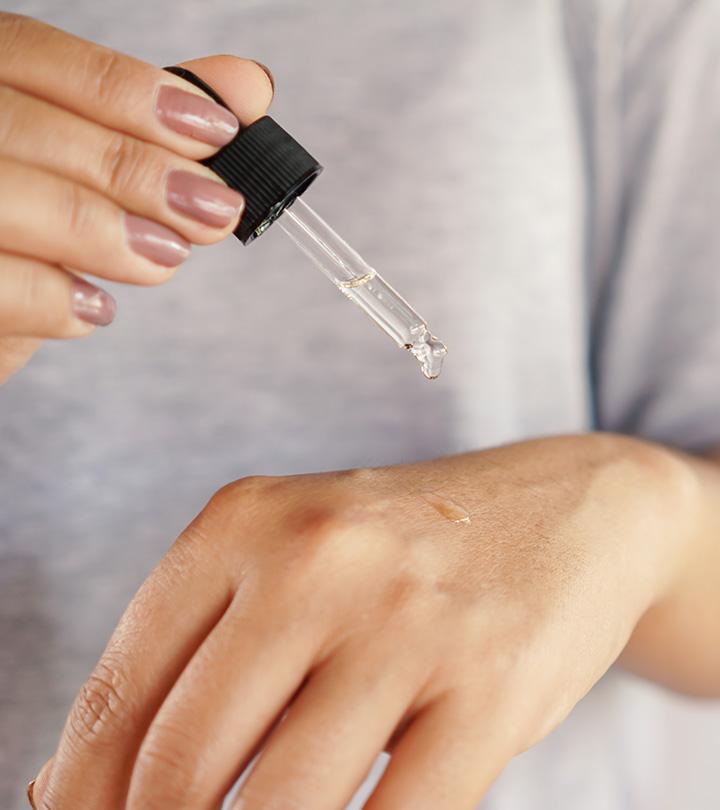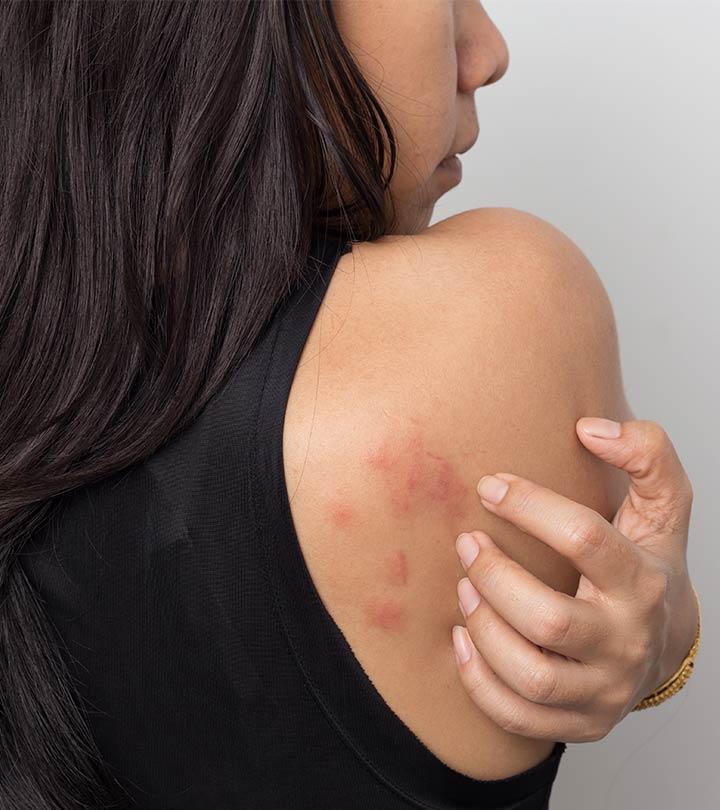Salicylic Acid For Acne: How To Use And Side Effects
Let us help you understand everything about this BHA that helps clear breakouts, if used the right way.

Image: iStock
You have probably come across salicylic acid products when browsing the skin care department in the drugstore. Salicylic acid is frequently referred to as a “go-to” remedy for acne. However, getting it to work for your skin might be difficult. That’s why, before you apply it to your breakouts, you should check to see if it is suitable for your skin. Learn all about salicylic acid and how it can help treat acne by reading this article.
In This Article
What Is Salicylic Acid?
Salicylic acid is a type of beta hydroxy acid (BHA) that is often used for topical application. There are two types of hydroxy acids alpha hydroxy acids (AHAs) and beta hydroxy acids (BHAs). AHAs have exfoliating properties that keep your skin smooth and even out your skin tone. BHAs work in similar ways as AHAs, but they also function as antibacterial agents by penetrating deep into your skin and unclogging the pores. And that is why salicylic acid can easily calm down irritated and stressed skin.
It is often misunderstood as a keratolytic agent or a peeling agent. However, salicylic acid is a desmolytic agent, i.e., it disrupts the cellular junction, breaking the cohesion of skin cells, helping the skin exfoliate itself (1). In the next section, we have explained the process in detail.
How Does Salicylic Acid Work For Acne?
Salicylic acid forms a part of topical treatment. It penetrates your skin and breaks down the lipids and fats that make the dead skin cells stick together. If these bonds are not broken down, the dead skin cells can block the skin pores and cause acne and pimples. As the acid breaks up the cells, it provides deep cleaning, promotes cell regeneration, and rejuvenates your skin.
A blogger shares how effective salicylic acid spot treatment recommended by her esthetician was for her: “It was hands-down one of the most sought-after ingredients by me (i).” She adds, “I used it twice a day – dabbing it on my zits or anywhere that I thought could potentially grow a zit – and it never irritated my skin. AWESOME.”
Salicylic acid is also beneficial for:
- Reducing hyperpigmentationi A harmless skin condition where one observes darker patches on the skin due to excess melanin production (natural skin pigment). (1)
- Minimizing fine lines, dark spots, and wrinkles (2)
Salicylic acid has anti-inflammatory properties, which may benefit the skin by reducing redness, irritation, and acne (1). The compound also exfoliates the skin, prevents pore clogging, and renews the skin, leading to a smoother, clearer skin tone. However, it has a narrow therapeutic window, which needs to be maintained for optimum anti-inflammatory benefits (3).
 Quick Tip
Quick TipBut using just any product with a salicylic acid formula will not work. For effective results, it is necessary to use the acid in a certain way.
How To Use Salicylic Acid Properly
Salicylic acid is available in cleansers, serums, gels, lotions, and moisturizers. Usually, 2% solution is used in OTC products. Follow the tips to use salicylic acid the right way:
- Limit its application to the affected areas. Avoid applying salicylic acid near the eyes and make sure it doesn’t get into your nose and mouth. If it does, rinse with water immediately.
- If you are using an over-the-counter product containing salicylic acid, start with a small amount on a small part of the affected area for three days. If it doesn’t feel uncomfortable, use it as per the instructions provided on the package.
- When using a product with salicylic acid, always apply it generously to the affected area and gently massage it.
- For salicylic acid in gel form, apply wet packs on the affected area for 5 minutes a post which you can apply the product.
- If you are using salicylic acid skin pads, simply wipe them over the skin without rinsing the acid off.
- If you are using a skin cleanser containing salicylic acid, wet your skin and gently massage the product for a few seconds. Avoid scrubbing. Wash thoroughly and pat dry.
- The dosage or frequency of application depends on your skin condition. Never use it in quantities more than suggested and avoid using it too often. Use it as per the directions of the doctor.
 Quick Tip
Quick TipDoctors often recommend salicylic acid for skin disorders such as acne, psoriasis, corns, calluses, and warts. It is also quite effective in reducing dandruff. Hence, the frequency of application may differ. Always consult a doctor before using salicylic acid. You may follow the below tips.
The Frequency Of Using Salicylic Acid
The frequency may also differ as per the formulation. You may use an OTC product as directed by the manufacturer or a doctor. Here’s what you can do:
- SA creams for corns and calluses: Use once every 3-5 days.
- SA gels for acne: Use once a day.
- SA gel for warts: Apply once a day.
- SA lotions for acne: Use 1-2 times a day.
- SA soaps for acne: Use as needed.
Salicylic acid is extremely potent and if used excessively, it may cause side effects. Let’s take a look.
Does Salicylic Acid Have Any Side Effects?
Salicylic acid does not cause side effects when used properly and in the recommended dosage. However, you may experience:
- Dryness
- Irritation
- Redness
- Burning and tingling sensations
- Skin discoloration
Though not scientifically proven, anecdotal evidence suggests that the overuse of this ingredient can affect your skin, especially for individuals with a darker skin tone. Therefore, if you are using a chemical peel with salicylic acid in it, be careful as it may lead to irregular pigmentation (4).
While there are many benefits of salicylic acid for the skin, a lack of caution may cause adverse effects. Here are the precautions to take when using salicylic acid.
Precautions To Take Before Using Salicylic Acid
Avoid using salicylic acid in the following cases:
- Allergic Reactions: Always inform your doctor if you have any allergies. Inform them if you are allergic to specific drugs, including ibuprofen, naproxen, aspirin, or any other non-steroidal anti-inflammatory drugs (NSAIDs).
- Skin And Health Issues: Avoid using salicylic acid (or consult the doctor) if you have atopic dermatitisi An allergic, inflammatory skin condition that causes itchy, bumpy, and cracked skin and rashes. , skin infections, uremiai A clinical condition where abnormally high levels of bodily waste and toxins build up in the blood. , wounds, or any other health issue (like diabetes or blood circulation issues).
- Pregnancy: Using salicylic acid is not recommended if you are pregnant (or are planning to get pregnant). If you are using salicylic acid or undergoing such treatment, plan your pregnancy after the treatment is over. Also, avoid salicylic acid if you are lactating.
- Drug Interactions: Salicylic acid can interfere with certain medications (for instance, blood thinners). So, if you are under medication, talk to your doctor before using it.
Salicylic acid should be used only as directed by the dermatologist or as per the instructions printed on the package (if it is a cream or gel). As salicylic acid gets easily absorbed by the skin, abusing it may cause poisoning. Here are a few things to keep in mind while using it:
- Avoid excessive use of salicylic acid. Otherwise, it may cause excessive exfoliation and irritate the skin.
- Start slow to observe how your skin responds. Let it get accustomed to the routine. Start with a lower concentration (0.5%) and increase the dosage gradually once your skin gets used to it.
- Follow up with hydrating moisturizers to minimize dryness.
- Avoid combining salicylic acid with retinol, vitamin C, and other AHAs like glycolic, lactic, malic, and mandelic acids to prevent skin irritation.
- Do not forget to apply sunscreen when stepping outside.
In case of redness and severe irritation, stop using the acid and consult a doctor.
Infographic: Tips For Using Salicylic Acid On Your Skin
Salicylic acid is an essential ingredient in your skin care regimen if you have acne-prone skin. However, using it the wrong way or in incorrect proportions may not give good results. To help you out, we have listed certain tips on using salicylic acid the right way in the infographic below. Take a look.

Illustration: StyleCraze Design Team
Salicylic acid is a type of beta-hydroxy acid often used in exfoliating dead skin and improving your skin texture. When it comes to acne, salicylic acid breaks down the fat layers in your skin and deeply cleanses your pores. Further, it reduces hyperpigmentationi A harmless skin condition where one observes darker patches on the skin due to excess melanin production (natural skin pigment). , dark spots, and wrinkles. To make sure you use salicylic acid safely, apply it on the affected areas and avoid using it too much to avoid dry skin, redness, and irritation. Follow the instructions given on the package or consult your doctor for the appropriate dosage.
Frequently Asked Questions
Can salicylic acid be harmful?
No. Salicylic acid is safe for skincare but may cause dryness, irritation, and skin tingling when you initially start with it.
Does salicylic acid make skin glow?
Yes. Salicylic acid is an exfoliating agent that removes dead skin cells, blackheads, and whiteheads, giving you glowing skin.
Can salicylic acid remove acne scars?
Yes. Salicylic acid can help remove acne scars by unclogging your pores and exfoliating the skin.
Can I use vitamin C with salicylic acid?
Yes. Vitamin C and salicylic acid have an acidic pH, and salicylic acid can help improve vitamin C’s absorption into the skin, helping you get the most benefit.
Should I use salicylic acid in the morning or at night?
Salicylic acid is suited for both morning and night applications. However, if you are applying it in the morning, step out with sunscreen too as the salicylic acid can make your skin more sensitive to the sun.
Key Takeaways
- Salicylic acid is a common ingredient found in anti-acne creams and treatments.
- You should be aware of your skin type and concerns before using any formulatoon with salicylic acid.
- While safe when used in the right amount and proper way, it is not recommended for pregnant women or people with any skin infections or open wounds.

Image: Dall·E/StyleCraze Design Team
Acne is a major concern for many. One solution that can help you out with this issue is salicylic acid. Check out the video below to know why salicylic acid is the best choice to clear up acne breakouts quickly.
Personal Experience: Source
StyleCraze's articles are interwoven with authentic personal narratives that provide depth and resonance to our content. Below are the sources of the personal accounts referenced in this article.
i. [AVOSKIN] MY LATEST ANTI-ACNE ROUTINEhttps://avoskindiary.wordpress.com/2022/05/02/avoskin-my-latest-anti-acne-routine/
References
Articles on StyleCraze are backed by verified information from peer-reviewed and academic research papers, reputed organizations, research institutions, and medical associations to ensure accuracy and relevance. Read our editorial policy to learn more.
- Salicylic acid as a peeling agent: a comprehensive review
https://www.ncbi.nlm.nih.gov/pmc/articles/PMC4554394/ - Hydroxy Acids, the Most Widely Used Anti-aging Agents
https://www.ncbi.nlm.nih.gov/pmc/articles/PMC3941867/ - Salicylic Acid (Aspirin)
https://www.ncbi.nlm.nih.gov/books/NBK519032/ - Complications of Medium Depth and Deep Chemical Peels
https://www.ncbi.nlm.nih.gov/pmc/articles/PMC3560165/
Read full bio of Dr. Vindhya L Veerula
Read full bio of Eshna Das
Read full bio of Shiboli Chakraborti





